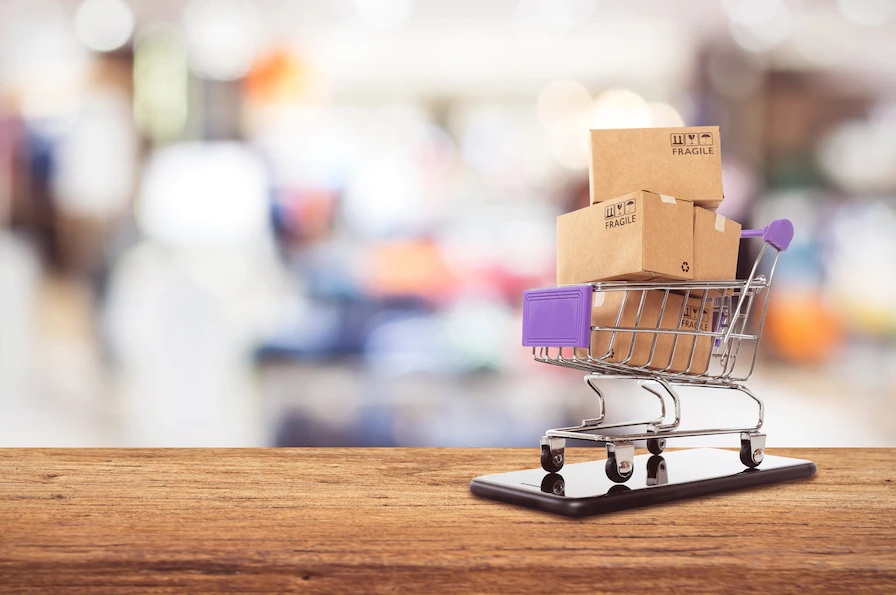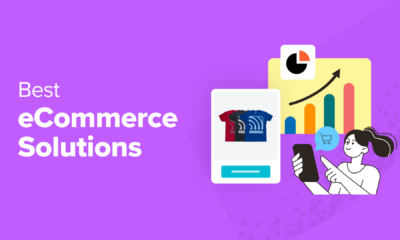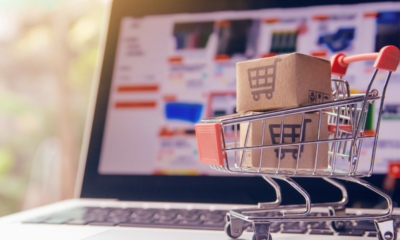MARKETING
10 Future Trends of Ecommerce Customer Experience

Customer experience is probably one of the most crucial aspects to focus on for ecommerce companies.
According to the PWC customer experience report, 86% of online shoppers are even willing to pay more in return for a superior customer experience.
While it’s true that quality products have a notable impact on the success of your ecommerce company. In fact, quality products were considered “King” once upon a time in the ecommerce industry. But the king has long been dethroned.
Nowadays, online shoppers value customer experience and product quality equally. This simply means that product quality is no longer the only reason why online shoppers buy from particular brands. They now emphasize on the overall online shopping experience.
Put another way, providing a superior customer experience is now your golden ticket to succeed in the fast-moving ecommerce space.
And in this article, we’ve shared the top 10 future ecommerce experience trends you need to consider adapting in your ecommerce company.
Before we dive in, let’s quickly clear up what ecommerce customer experience actually means.
What is Ecommerce Customer Experience?
Ecommerce customer experience basically refers to how your customers perceive all their interactions with your ecommerce brand. It covers all online experiences starting from the first time a customer hears about your ecommerce company to the post-purchase experience.
Though, there is no one way to create a winning customer experience for your ecommerce company. But one thing that’s clear as crystal is that it must be simple and satisfying for your customers. Otherwise, they’ll immediately get frustrated and begin the hunt for alternative options in the market.
To help you prevent that, we’ve shared 10 customer experience trends to implement in your ecommerce store.
Top 10 Future Ecommerce Customer Experience Trends
COVID-19 pandemic brought plenty of customer experience trends that have ultimately helped ecommerce companies over-achieve their goals.
But in order to remain competitive, every ecommerce company must also be on the lookout for future ecommerce customer experience trends to adapt.
Here are the top 10 future trends you can consider.
1 – Customer Service
Customer service plays a crucial role in providing a positive customer experience in ecommerce stores.
According to Microsoft Customer Service Report, 72% of online shoppers expect the ecommerce support team to have an idea of who they are, what purchases they’ve made previously, and what kind of help they need.
The same report also revealed that 48% of online shoppers expect a response from the support team within 24 hours, while 18% of them expect a response within the first hour.
Furthermore, 56% of customers stop shopping from an ecommerce brand if the customer service experience is poor.
The lesson here is, ecommerce companies must keep track of their customers and promptly respond to their queries/complaints with satisfying solutions.
2 – Payment Security
Believe it or not but payment security plays a major role in ecommerce customer experience strategy.
Plus, ecommerce companies also need to be vigilant about accepting payments online. Especially because of the volume of online payment frauds occurring these days.
According to a report, online fraudsters are predicted to siphon off $12 billion per year.
Another report by Finance Online also found that ecommerce companies deal with 206,000 web attacks on average every month.
Looking at these reports, one thing is clear — ensuring a secure payment transaction is a must to earn customers’ trust and develop a strong customer experience in ecommerce.
3 – Faster Delivery
In the age of instant gratification, customers’ expectations for faster delivery is growing every passing day.
Ever since Amazon pivoted from 2-day shipping to next-day shipping and now same-day delivery, it has forced other ecommerce brands to follow Amazon’s footsteps.
According to a recent survey conducted by PWC, 88% of online shoppers are even willing to pay more for faster delivery options.
Because of this, over 51% of ecommerce brands worldwide have already started offering same-day delivery. And 65% of ecommerce companies plan to offer it in the next two years.
The point is, it is now absolutely critical to start offering faster delivery options to remain competitive in your ecommerce niche.
This is even more crucial if you’re selling products globally but unable to keep up with faster deliveries. In such cases, you should partner with a quick international courier service that guarantees timely delivery of all your international shipments.
4 – Hyper-Personalized Upselling
When it comes to ecommerce, the potential of upselling cannot be overlooked. And by offering hyper-personalization along with custom-tailored deals, it becomes easier to win customers.
A McKinsey report recently found that ecommerce brands that go the extra mile to serve customers with a hyper-personalized shopping experience grow faster (in terms of revenue) than their competition.
By offering personalized incentives you can also boost upselling in your ecommerce store. You can create various forms of incentives such as point-based rewards, cashback offers, referral bonus programs, and so on.
If you’re planning to implement incentives of any form, make sure to integrate functionality that lets you create custom incentives with ease.
5 – Habit Loops
Humans are creatures of habit. In fact, habits have a massive impact on our everyday lives. That includes how we interact with other human beings, and how we interact with brands.
Therefore, creating habit loops in your ecommerce store can have a huge impact on the overall customer experience. A habit loop is a neurological loop that forms a habit in every one of us. It consists of a cue, routine, and reward.
Smartphones are a prime example of habit loop formation. A new notification is a cue, checking the notification is routine, and seeing a new message from a friend or loved one is a reward.
To form a habit loop in your ecommerce store, you need to start by creating a hook for your products. Hooks trigger an action that leads to a reward for your potential customers.
While forming habit loops, make sure that they make your potential customers excited about your products and your ecommerce brand so that they continually reach out for more rewards.
6 – Self-Service
Nowadays, customer service channels are getting increasingly overwhelmed and the customers are also well-aware of this fact. This is why customers are now also becoming more resourceful and seek to fix their problems independently.
Ecommerce brands need to respect this and make it easier for customers to find solutions to their problems.
The best way to do this is by investing in a knowledge base and a dedicated FAQ page. Having a knowledge base and FAQ page can help your customers walk through the common problems and discover the best solutions possible.
7 – Social Commerce
Social commerce makes it easy for customers to connect with brands and shop for products they desire to purchase on their favorite social media platforms.
The shopping features on Facebook and Instagram allow users to buy products from their favorite brands in just a few clicks.
According to research, almost one in three Facebook users in the US are planning to make purchases through the platform in 2022.
Statista also revealed that social commerce sales are forecasted to triple by the year 2025.
So, if you haven’t already created your product catalog on Facebook, Instagram, and Pinterest, you should do it right away!
8 – AI-Powered Chatbots
AI-powered chatbots are ruling the ecommerce space these days. In fact, ecommerce brands are predicted to spend nearly $7.3 billion on AI by the end of 2022.
So, if you haven’t invested in an AI-powered chatbot, you absolutely should.
The main reason AI-powered chatbots are on the rise is that online shoppers nowadays hate to wait for getting answers to their questions.
AI-powered chatbots can resolve this issue by answering your prospects’ questions in real-time. And in situations where your AI-powered chatbot cannot answer a customer’s question, it can automatically transfer it to one of your human representatives.
This way, your customer support team can focus only on complex queries, while your AI-powered chatbot handles the rest.
9 – Omnichannel Customer Experience
For many years, trends in the ecommerce space have been pushing towards creating an omnichannel customer experience.
For those who don’t know, omnichannel customer experience is about meeting your customers wherever they hang out the most online and selling your products on those platforms.
Social commerce, for instance, is a prime example of the omnichannel customer experience.
Another crucial ecommerce channel is mobile commerce.
According to Statista, the total m-commerce sales in the US already surpassed $360 billion in 2021. And the same is forecasted to reach $710 billion by 2025.
Looking at these statistics, it goes without saying that your customers should be able to purchase your products on their smartphones & social media platforms just as easily as they can on your desktop website.
10 – Augmented Reality
When COVID-19 Pandemic restricted people from visiting brick-and-mortar stores to try on apparel items before purchasing, ecommerce brands started integrating Augmented Reality technology in their online stores.
The AR technology enabled customers to try on apparel through either webcam or by uploading their photos and allowed them to experience the product digitally.
While the pandemic has begun to wane, customers continue to make apparel purchases online. AR has given them the possibility to shop apparels confidently on the internet and that trend is only going to grow in the near future.
Key Takeaway
If you’re an ecommerce brand looking for ways to not only maintain but also grow your market share in 2022 and beyond, you need to double down on improving customer experience in your ecommerce storefront.
Implementing the 10 future trends mentioned in the article will definitely help to elevate your overall ecommerce customer experience and increase your market share in the near future.













You must be logged in to post a comment Login